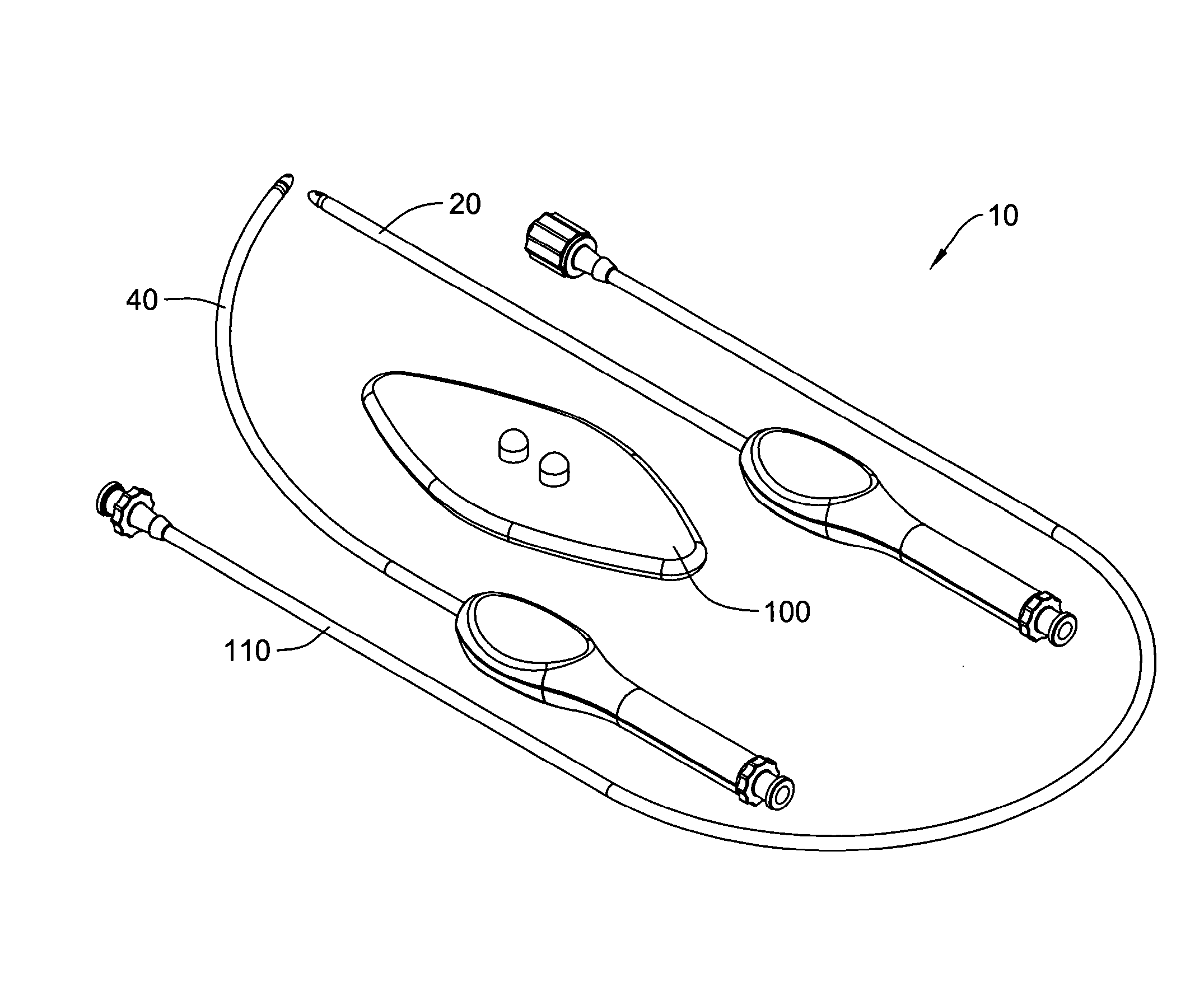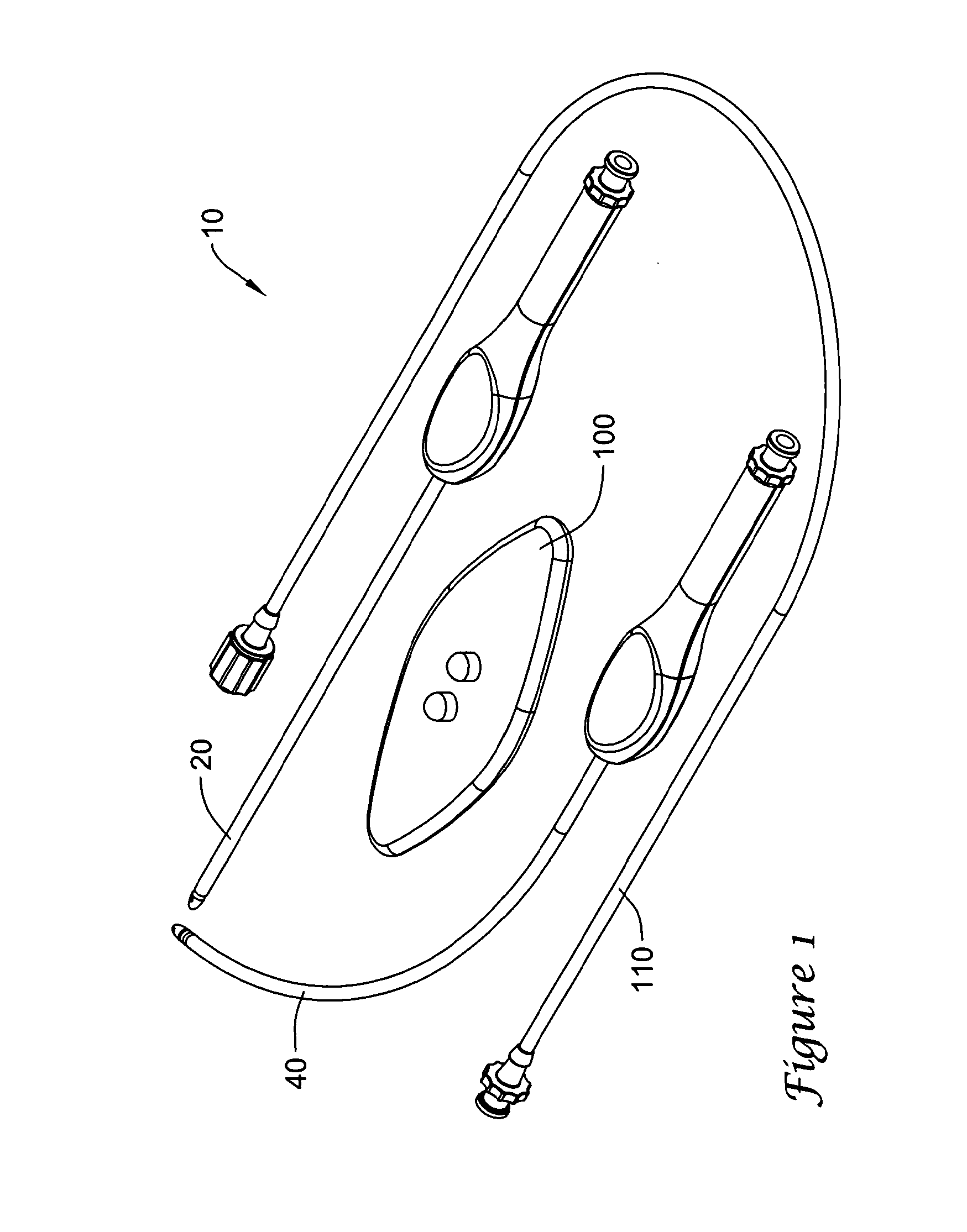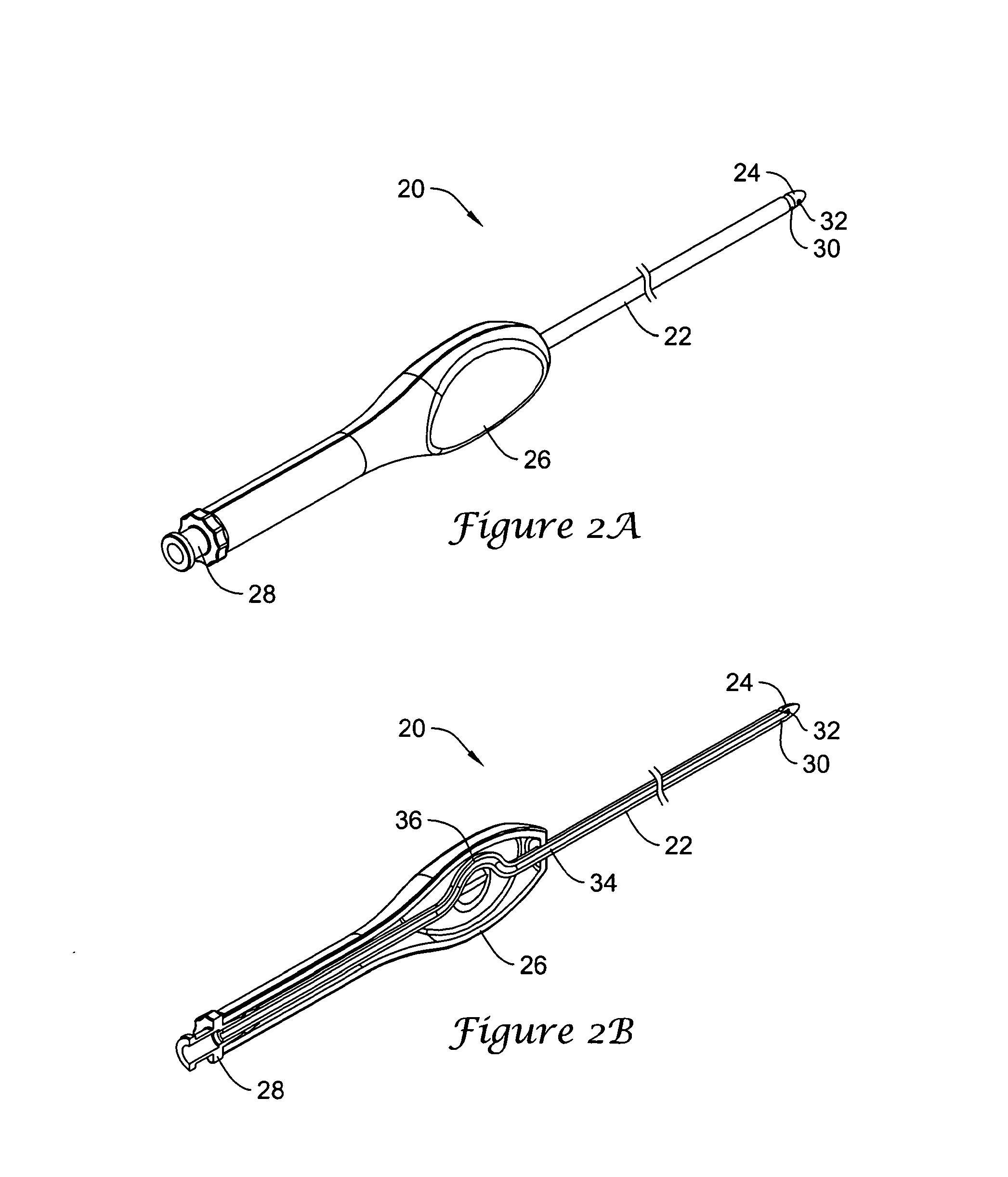Apparatus for subcutaneous electrode insertion
a technology of electrodes and apparatus, applied in the field of medical treatments, can solve problems such as perforation, fracture after repeated stress, and many problems, and achieve the effects of reducing the risk of fracture, and improving the safety of patients
- Summary
- Abstract
- Description
- Claims
- Application Information
AI Technical Summary
Benefits of technology
Problems solved by technology
Method used
Image
Examples
Embodiment Construction
[0025]The following detailed description should be read with reference to the drawings. The drawings, which are not necessarily to scale, depict illustrative embodiments and are not intended to limit the scope of the invention.
[0026]It should be noted that the terms “lead” and “lead electrode assembly” as used herein carry distinct meanings, with a lead electrode assembly being a lead and electrode coupled together. U.S. patent application Ser. No. 09 / 940,377 to Bardy et al., now U.S. Pat. No. 6,866,044, is incorporated herein by reference. Bardy et al. suggest several methods for insertion of a defibrillator device including a subcutaneous canister and electrode(s), and explain additional details of subcutaneous defibrillation devices and methods.
[0027]FIG. 1 illustrates in perspective view a lead electrode assembly insertion tool kit including several components. The kit 10 includes a number of items, including a straight insertion tool 20, a curved insertion tool 40, a bending to...
PUM
 Login to View More
Login to View More Abstract
Description
Claims
Application Information
 Login to View More
Login to View More - R&D
- Intellectual Property
- Life Sciences
- Materials
- Tech Scout
- Unparalleled Data Quality
- Higher Quality Content
- 60% Fewer Hallucinations
Browse by: Latest US Patents, China's latest patents, Technical Efficacy Thesaurus, Application Domain, Technology Topic, Popular Technical Reports.
© 2025 PatSnap. All rights reserved.Legal|Privacy policy|Modern Slavery Act Transparency Statement|Sitemap|About US| Contact US: help@patsnap.com



